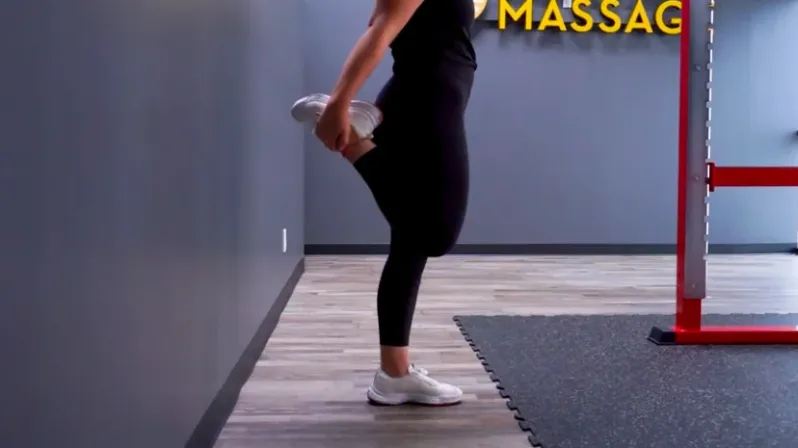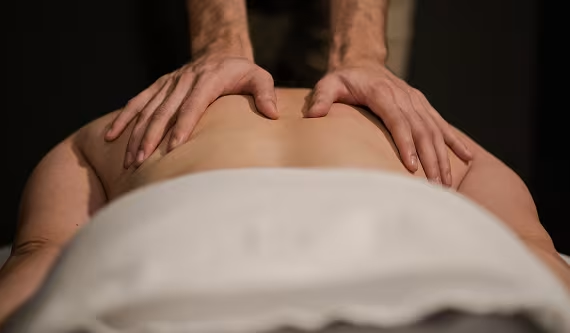Basketball muscle injuries treatment is essential for any player looking to stay in top form and avoid setbacks on the court. Basketball is a fast-paced, high-impact sport that demands a combination of speed, agility, endurance, and strength. Every sprint, jump, and sudden change in direction places stress on your muscles, joints, and ligaments. Whether you play competitively or recreationally in Edmonton or Sherwood Park, staying injury-free is crucial to maintaining peak performance and enjoying the game without interruptions.
By focusing on proper warm-ups, strength training, flexibility, and recovery techniques, you can reduce the risk of common basketball injuries like ankle sprains, knee pain, and muscle strains. Knowing what muscles basketball works helps you build strength in key areas, improving your stability, power, and endurance on the court.
Taking care of your body with the right basketball muscle injuries treatment not only keeps you playing at your best but also helps you stay active and injury-free for the long run. Whether you’re preparing for an intense game or a casual match, investing in proper training, injury prevention, and recovery methods ensures that you can move confidently, play harder, and recover faster.
What Muscles Does Basketball Work?
Basketball requires rapid directional changes, sprinting, jumping, and sustained endurance. These movements rely on multiple muscle groups working together.
What Are the Main Muscles Used in Basketball?
- Quadriceps – Located at the front of the thigh, these muscles power jumps, sprints, and knee stabilization.
- Hamstrings – Found at the back of the thigh, they help with knee flexion and absorbing landing impact.
- Glutes – Provide strength and stability for lateral movements, sprinting, and explosive jumping.
- Calves – Support balance, agility, and ankle movements for quick cuts and jumps.
- Core Muscles – Strengthens posture, aids in stability, and protects against impact injuries.
- Shoulders and Arms – Play a crucial role in passing, shooting, and absorbing upper-body contact.
Understanding what muscles basketball works can help players develop a more effective training and injury prevention routine.

Common Basketball Muscle Injuries
Basketball players are prone to a variety of injuries due to the sport’s high-intensity nature. The most common injuries include:
Ankle Sprains
- Occur when the foot rolls unnaturally, stretching or tearing ligaments.
- One of the most frequent basketball injuries due to frequent jumping and rapid directional changes.
Knee Injuries
- Patellar Tendinitis (Jumper’s Knee): Caused by repeated jumping, leading to knee pain and inflammation.
- Meniscus Tears: Often occur when the knee twists while bearing weight.
- ACL Injuries: A severe condition resulting from abrupt stops or changes in direction.
Muscle Strains
- Overuse or sudden acceleration can strain the hamstrings, quadriceps, and calves.
- Causes pain, stiffness, and temporary loss of mobility.
Shoulder Injuries
- Overuse from frequent shooting and passing can lead to rotator cuff strains.
- Contact injuries can cause shoulder dislocations.
Hand and Wrist Injuries
- Common injuries include jammed fingers, wrist sprains, and fractures due to frequent ball handling and contact.
How to Prevent Basketball Muscle Injuries
Proper preparation and technique can significantly reduce injury risks. Here are some essential injury prevention strategies:
1. Warm Up Properly
- Perform dynamic stretching, light jogging, and mobility exercises before games or training.
- Loosens muscles, improves blood circulation, and reduces stiffness.
2. Strength Training
- Strengthen key muscles used in basketball such as the quadriceps, hamstrings, glutes, and core.
- Stronger muscles absorb impact better and reduce stress on joints.
3. Wear the Right Footwear
- Invest in basketball shoes with ankle support to reduce the risk of sprains.
- Ensure proper fit to improve stability and traction.
4. Master Jumping and Landing Techniques
- Always land with bent knees to absorb impact.
- Avoid excessive inward or outward knee movement upon landing.
5. Hydration and Nutrition
- Dehydration contributes to muscle cramps, fatigue, and decreased performance.
- Stay hydrated and maintain a balanced diet with sufficient protein and electrolytes.
6. Recovery and Muscle Care
- Massage therapy can help loosen tight muscles, prevent stiffness, and accelerate healing.
- Consider sports massage to maintain muscle flexibility.
- Deep tissue massage can target muscle knots and chronic tension.
Best Treatments for Basketball Muscle Injuries
Even with prevention techniques, injuries can still happen. Proper basketball muscle injuries treatment is crucial for recovery and getting back on the court safely.
Ankle Sprains
- Follow the RICE Method (Rest, Ice, Compression, Elevation) immediately after an injury.
- Use ankle braces or taping techniques for additional support.
- Consider manual osteopathy for joint alignment and healing.
Knee Injuries
- For mild injuries, rest, ice, and anti-inflammatory medications can help.
- Severe conditions like ACL tears may require physical therapy or surgery.
- Shockwave therapy can accelerate tissue healing.
Muscle Strains
- Apply ice and compression to reduce swelling.
- Myofascial cupping can help release muscle tension.
- Strengthening exercises can prevent re-injury.
Shoulder Injuries
- Rest and apply heat or ice for pain relief.
- Strengthen rotator cuff muscles through physical therapy.
- Massage therapy can enhance flexibility and mobility.
Hand and Wrist Injuries
- Use splints or braces for stability.
- Seek medical attention for fractures or severe sprains.
For long-term injury prevention and recovery, booking therapeutic massage can help maintain optimal muscle health.
Improving Performance and Recovery
Basketball requires endurance, agility, and strength. By implementing proper injury prevention and recovery strategies, you can keep your body in peak condition throughout the season.
Key Takeaways for Injury Prevention and Treatment
- Strengthen key basketball muscles to improve performance and reduce injury risk.
- Warm up and stretch before games or workouts.
- Use proper landing techniques to protect your joints.
- Stay hydrated and maintain a balanced diet.
- Utilize massage therapy and physiotherapy for faster recovery.
For expert basketball muscle injuries treatment, visit Athlete’s Choice Massage in Edmonton or Sherwood Park to book a recovery session.





